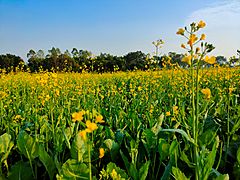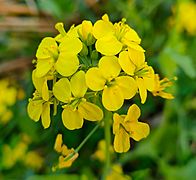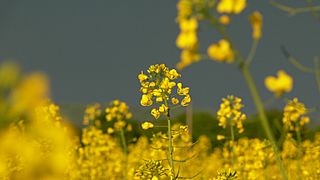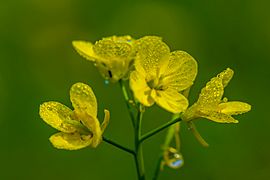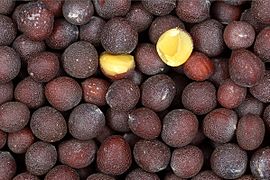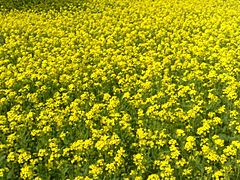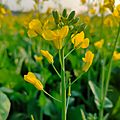Mustard plant facts for kids
Quick facts for kids Mustard |
|
|---|---|
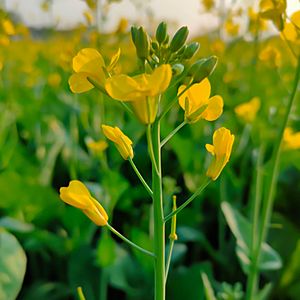 |
|
| Mustard Plant | |
| Scientific classification | |
| Kingdom: | |
| Division: | |
| Class: | |
| Order: | |
| Family: | |
| Genus: |
Brassica ; Sinapis
|
The word mustard refers to several types of plants. These plants belong to the Brassica or Sinapis groups. They grow tiny seeds. These seeds are very useful!
You can use mustard seeds as a condiment. A condiment is something like a sauce or spice that adds flavor to food. When the seeds are ground up and mixed with water, vinegar, and other things, they make the yellow sauce we call mustard.
Mustard seeds can also be pressed to make mustard oil. This is a type of vegetable oil. Some mustard plants also have leaves that you can eat. These are known as mustard greens.
Contents
Exploring Mustard Plants
Mustard plants grow all over the world. There are different kinds, and each has its own story.
Different Kinds of Mustard
- White mustard (Sinapis hirta) grows naturally in North Africa, the Middle East, and parts of Europe near the Mediterranean Sea. People have grown it for a very long time, so it has spread widely.
- Brown or Indian mustard (B. juncea) first came from the Himalayas mountains. Today, it is grown in places like the UK, Canada, and the US.
- Black mustard (B. nigra) is grown in Argentina, Chile, the US, and some European countries.
Mustard's Plant Family
Mustard plants are part of a larger plant family called Brassica. This family also includes many other common vegetables you might know. Some of these are cabbages, cauliflower, rapeseed, and turnips.
Amazing Uses for Mustard
Mustard plants are not just for food! They have other cool uses too.
Mustard for Fuel
Scientists are looking into new types of mustard plants. These plants have a lot of oil in their seeds. This oil can be used to make biodiesel. Biodiesel is a renewable liquid fuel. It is similar to the fuel used in diesel engines. This means it can be used instead of fuels that come from oil in the ground.
Mustard as a Natural Helper
After the oil is pressed out of the mustard seeds, there is some leftover material. This leftover material has been found to be a good pesticide. A pesticide is something that helps control pests that can harm crops. So, mustard can help farmers protect their plants naturally!
Mustard and Genetics
Scientists have also studied the genetic relationships between many different types of mustard plants. This helps them understand how these plants are related to each other.
Important Note
It's important to know that the mustard plant is not related to mustard gas. Mustard gas is a harmful chemical used in chemical warfare. They just happen to have similar names.
Gallery
Images for kids
-
Mustard Plant and Butterflies, early or middle Ming dynasty c. 1368–1550


